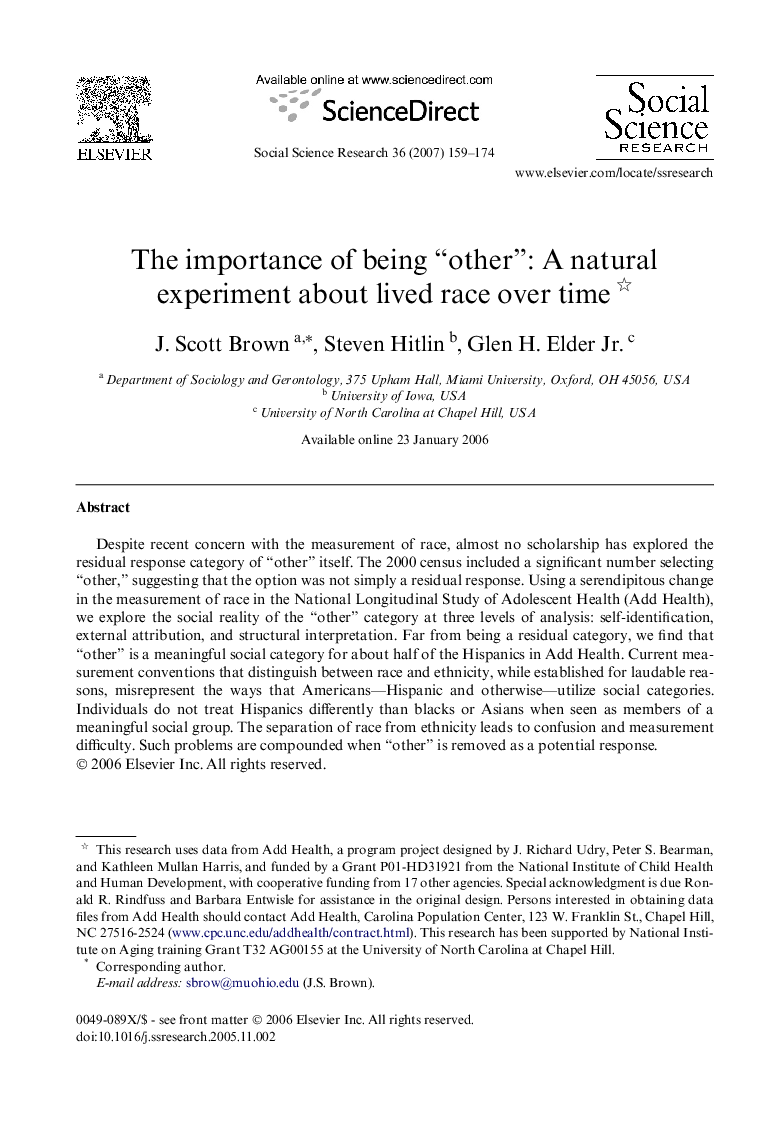| Article ID | Journal | Published Year | Pages | File Type |
|---|---|---|---|---|
| 956479 | Social Science Research | 2007 | 16 Pages |
Despite recent concern with the measurement of race, almost no scholarship has explored the residual response category of “other” itself. The 2000 census included a significant number selecting “other,” suggesting that the option was not simply a residual response. Using a serendipitous change in the measurement of race in the National Longitudinal Study of Adolescent Health (Add Health), we explore the social reality of the “other” category at three levels of analysis: self-identification, external attribution, and structural interpretation. Far from being a residual category, we find that “other” is a meaningful social category for about half of the Hispanics in Add Health. Current measurement conventions that distinguish between race and ethnicity, while established for laudable reasons, misrepresent the ways that Americans—Hispanic and otherwise—utilize social categories. Individuals do not treat Hispanics differently than blacks or Asians when seen as members of a meaningful social group. The separation of race from ethnicity leads to confusion and measurement difficulty. Such problems are compounded when “other” is removed as a potential response.
